#John Charles Dickson
Explore tagged Tumblr posts
Text
› books in question ‹





#i hadnt done a poll in a while so i figured this was the right opportunity ;)#book poll#book blog#booklr#bookish#books#books and literature#books and libraries#reading#bookworm#books and reading#poll#tumblr polls#polls#book polls#bibliophile#reblog for larger sample size#book aesthetic#aesthetic
7 notes
·
View notes
Text
i went to a used book sale today... procured:
railroad color history: new york central railroad (brian solomon & mike schafer) — i'm not actually that into trains but it appealed to me.
the complete guide to the soviet union (jennifer louis & victor louis) — travel guide from 1980
an anthology including the big sleep (raymond chandler), "the undignified melodrama of the bone of contention" (dorothy l. sayers), "the arrow of god" (leslie charteris), "i can find my way out" (ngaio marsh), instead of evidence (rex stout), "rift in the loot" (stuart palmer & craig rice), "the man who explained miracles" (john dickson carr), & rebecca (daphne du maurier) (i already have this one..) — it's volume 2 of something (a treasury of great mysteries) which annoys me but whatever
an anthology including "godmother tea" (selena anderson), "the apartment" (t. c. boyle), "a faithful but melancholy account of several barbarities lately committed" (jason brown), "sibling rivalry" (michael byers), "the nanny" (emma cline), "halloween" (mariah crotty), "something street" (carolyn ferrell), "this is pleasure" (mary gaitskill), "in the event" (meng jin), "the children" (andrea lee), "rubberdust" (sarah thankam mathews), "it's not you" (elizabeth mccracken), "liberté" (scott nandelson), "howl palace" (leigh newman), "the nine-tailed fox explains" (jane pek), "the hands of dirty children" (alejandro puyana), "octopus vii" (anna reeser), "enlightenment" (william pei shih), "kennedy" (kevin wilson), & "the special world" (tiphanie yanique) — i guess they're all short stories published in 2020 by usamerican/canadian authors
an anthology including the death of ivan ilyich (leo tolstoy) (i have already read this one..), the beast in the jungle (henry james), heart of darkness (joseph conrad), seven who were hanged (leonid andreyev), abel sánchez (miguel de unamuno), the pastoral symphony (andré gide), mario and the magician (thomas mann), the old man (william faulkner), the stranger (albert camus), & agostino (alberto moravia)
the ambassadors (henry james)
the world book desk reference set: book of nations — it's from 1983 so this is kind of a history book...
yet another fiction anthology......... including the general's ring (selma lagerlöf), "mowgli's brothers" (rudyard kipling), "the gift of the magi" (o. henry) (i have already read this one..), "lord mountdrago" (w. somerset maugham), "music on the muscatatuck" (jessamyn west), "the pacing goose" (jessamyn west), "the birds" (daphne du maurier), "the man who lived four thousand years" (alexandre dumas), "the pope's mule" (alphonse daudet), "the story of the late mr. elvesham" (h. g. wells), "the blue cross" (g. k. chesterton), portrait of jennie (robert nathan), "la grande bretèche" (honoré de balzac), "love's conundrum" (anthony hope), "the great stone face" (nathaniel hawthorne), "germelshausen" (friedrich gerstäcker), "i am born" (charles dickens), "the legend of sleepy hollow" (washington irving), "the age of miracles" (melville davisson post), "the long rifle" (stewart edward white), "the fall of the house of usher" (edgar allan poe) (i have already read this one..), the voice of bugle ann (mackinlay kantor), the bridge of san luis rey (thornton wilder), "basquerie" (eleanor mercein kelly), "judith" (a. e. coppard), "a mother in mannville" (marjorie kinnan rawlings), "kerfol" (edith wharton), "the last leaf" (o. henry), "the bloodhound" (arthur train), "what the old man does is always right" (hans christian anderson), the sea of grass (conrad richter), "the sire de malétroit's door" (robert louis stevenson), "the necklace" (guy de maupassant) (i have already read this one..), "by the waters of babylon" (stephen vincent benét), a. v. laider (max beerbohm), "the pillar of fire" (percival wilde), "the strange will" (edmond about), "the hand at the window" (emily brontë) (i have already read this one..), & "national velvet" (enid bagnold) — why are seven of these chapters of novels....? anyway fun fact one of the compilers here also worked on the aforementioned mystery anthology. also anyway Why did i bother to write all that ☹️
fundamental problems of marxism (georgi plekhanov) — book about dialectical/historical materialism which is published here as the first volume of something (marxist library) which is kind of odd to me tbh
one last (thankfully tiny) anthology including le père goriot (honoré de balzac) & eugénie grandet (honoré de balzac)
6 notes
·
View notes
Text
On May 29th 1679 Covenanters under Sir Robert Hamilton take Rutherglen before evading government troops.
This was another of those declarations that Covenanters liked to do every now and then, in this one they announced that it was a lawful act to kill King Charles II.
Around seventy to eighty armed and mounted Covenanters rode into Rutherglen and read out a declaration, originally known as the Rutherglen Testimony which condemned the acts which made conventicles and support for the Covenant illegal. It had been planned to affix it to the cross in Glasgow, but the presence of Claverhouse and his soldiers made them change their mind and Rutherglen was chosen instead. The day was supposedly identified as one on which to celebrate the restoration of Charles II, but the Covenanters at Rutherglen extinguished the bonfires which had been lit to mark the event. A copy of the declaration was then affixed to the marked cross and the Covenanters rode off towards the moors for protection.
They were led by Sir Robert Hamilton of Preston, 2nd Baronet, John ‘Burleigh’ Balfour, and James Russell. and local outed minister, Rev John Dickson. Rev Thomas Douglas led the crowd in prayer and Hamilton read out the seven parts of the declaration which denounced episcopacy and the royal supremacy. The King’s statutes, including the Act of Supremacy, was taken from the market cross and burned in a fire lit by the Covenanters. Within a short period of time, the Covenanters were met at Drumclog, by the soldiers under John Graham of Claverhouse.
I will cover the Battle of Drumclog on its anniversary later this week.
Here is an extract from the declaration......
‘As the Lord hath been pleased to keep and preserve his interest in this land, by the testimony of faithful witnesses from the beginning, so some in our days have not been wanting, who, upon great hazards, have added their testimony to the testimony of those who have gone before them, and who have suffered imprisonments, finings, forfeitures, banishment, torture, and death from an evil and perfidious adversary to the church and kingdom of our Lord Jesus Christ in the land. Now we being pursued by the same adversary for our lives, while owning the interest of Christ, according to his word, and in the national and solemn league and covenants, judge it our duty (though unworthy, yet hoping we are true members of the church of Scotland) to add our testimony to those of the worthies who have gone before us, in witnessing against all things that have been done publicly in prejudice of his interest, from the beginning of the work of reformation, especially from the year 1648 downward to the year 1660. But more particularly those since, as 1. Against the act recissory, for over turning the whole covenanted reformation. 2. Against the acts for erecting and establishing of abjured prelacy. [66] 3. Against that declaration imposed upon, and subscribed by all persons in public trust, where the covenants are renounced and condemned. 4. Against the act and declaration published at Glasgow, for outing of the faithful ministers who could not comply with prelacy, whereby 300 and upwards of them were illegally ejected. 5. Against that presumptuous act for imposing an holy anniversary day, as they call it, to be kept yearly upon the 29th of May, as a day of rejoicing and thanksgiving for the king’s birth and restoration; whereby the appointers have intruded upon the Lord’s prerogative, and the observers have given glory to the creature that is due to our Lord Redeemer, and rejoiced over the setting up an usurping power to the destroying the interest of Christ in the land. 6. Against the explicatory act, 1669, and sacrilegious supremacy enacted and established thereby. 7. Lastly. Against the acts of council, their warrants and instructions for indulgence, and all other their sinful and unlawful acts, made and executed by them, for promoting their usurped supremacy. And, for confirmation of this our testimony, we do this day, being the 29th of May 1679, publicly at the cross of Rutherglen, most justly burn and above mentioned acts, to evidence our dislike and testimony against the same, as they have unjustly, perfidiously, and presumptuously burned our sacred covenants. And, we hope, none will take exception against our not subscribing this our testimony, being so solemnly published; since we are always ready to do in this as shall be judged necessary, by consent of the rest of our suffering brethren in Scotland.
The pic is of a memorial plaque at Rutherglen Mercat Cross.

10 notes
·
View notes
Text
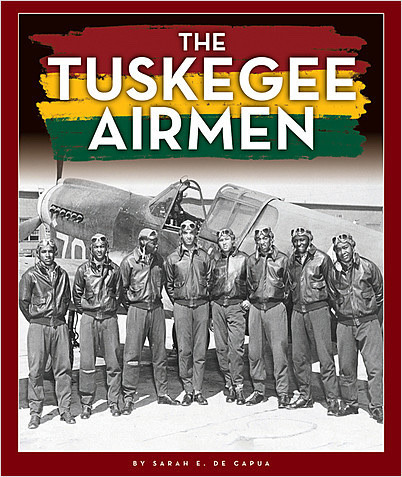
The Tuskegee Airmen were a group of African-American and Caribbean-born military pilots who fought in WWII. They formed the 332nd Fighter Group and the 477th Bombardment Group of the Army Air Forces. The name applies to the navigators, bombardiers, mechanics, instructors, crew chiefs, nurses, cooks, and other support personnel.
All African American military pilots who trained in the US trained at Moton Field, the Tuskegee Army Air Field, and were educated at Tuskegee University. The group included five Haitians from the Haitian Air Force and one pilot from Trinidad. It included a Hispanic or Latino airman born in the Dominican Republic.
March 22, 1942 - The first five cadets graduate from the Tuskegee Flying School: Captain Benjamin O. Davis, Jr. and Second Lieutenants Mac Ross,
Charles DeBow, L.R. Curtis, and George S. Roberts. They will become part of my the famous 99th Pursuit Squadron. List of Tuskegge Airmen.
Paul Adams (pilot)
Rutherford H. Adkins
Halbert Alexander
William Armstrong
Lee Archer
Robert Ashby
William Bartley
Howard Baugh
Henry Cabot Lodge Bohler
George L. Brown
Harold Brown
Roscoe Brown
Victor W. Butler
William Burden
William A. Campbell
Herbert Carter
Raymond Cassagnol
Eugene Calvin Cheatham Jr.
Herbert V. Clark
Granville C. Coggs
Thomas T.J. Collins
Milton Crenchaw
Woodrow Crockett
Lemuel R. Custis
Floyd J. Crawthon Jr
Doodie Head
Clarence Dart
Alfonza W. Davis
Benjamin O. Davis Jr. (C/O)
Charles DeBow
Wilfred DeFour
Gene Derricotte
Lawrence Dickson
Charles W. Dryden
John Ellis Edwards
Leslie Edwards Jr.
Thomas Ellis
Joseph Elsberry
Leavie Farro Jr
James Clayton Flowers
Julius Freeman
Robert Friend (pilot)
William J. Faulkner Jr.
Joseph Gomer
Alfred Gorham
Oliver Goodall
Garry Fuller
James H. Harvey
Donald A. Hawkins
Kenneth R. Hawkins
Raymond V. Haysbert
Percy Heath
Maycie Herrington
Mitchell Higginbotham
William Lee Hill
Esteban Hotesse
George Hudson Jr.
Lincoln Hudson
George J. Iles
Eugene B. Jackson
Daniel "Chappie" James Jr.
Alexander Jefferson
Buford A. Johnson
Herman A. Johnson
Theodore Johnson
Celestus King III
James Johnson Kelly
James B. Knighten
Erwin B. Lawrence Jr.
Clarence D. Lester
Theodore Lumpkin Jr
John Lyle
Hiram Mann
Walter Manning
Robert L. Martin
Armour G. McDaniel
Charles McGee
Faythe A. McGinnis
John "Mule" Miles
John Mosley
Fitzroy Newsum
Norman L Northcross
Noel F. Parrish
Alix Pasquet
Wendell O. Pruitt
Louis R. Purnell Sr.
Wallace P. Reed
William E. Rice
Eugene J. Richardson, Jr.
George S. Roberts
Lawrence E. Roberts
Isaiah Edward Robinson Jr.
Willie Rogers
Mac Ross
Robert Searcy
David Showell
Wilmeth Sidat-Singh
Eugene Smith
Calvin J. Spann
Vernon Sport
Lowell Steward
Harry Stewart, Jr.
Charles "Chuck" Stone Jr.
Percy Sutton
Alva Temple
Roger Terry
Lucius Theus
Edward L. Toppins
Robert B. Tresville
Andrew D. Turner
Herbert Thorpe
Richard Thorpe
Thomas Franklin Vaughns
Virgil Richardson
William Harold Walker
Spann Watson
Luke J. Weathers, Jr.
Sherman W. White
Malvin "Mal" Whitfield
James T. Wiley
Oscar Lawton Wilkerson
Henry Wise Jr.
Kenneth Wofford
Coleman Young
Perry H. Young Jr.
#africanhistory365 #africanexcellence
1 note
·
View note
Text
Antología de las mejores novelas policíacas, I (Editorial Acervo)
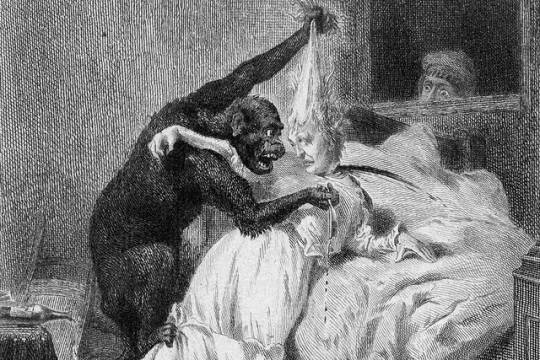
No hay duda de que la Antología de las mejores novelas policíacas publicada por Acervo es la mejor de todas las que se pueden encontrar en español. Pero esto no es tanto por su extensión (más de 6 mil páginas en 18 volúmenes) como por su contenido: además de autores reconocidos del género (Agatha Christie, John Dickson Carr, Ellery Queen, G. K. Chesterton, George Simenon) y de autores reconocidos ajenos al género que en alguna ocasión lo practicaron (Charles Dickens, Robert Louis Stevenson, Guy De Maupassant, William Faulkner, Roald Dah) se incluyen una gran cantidad de escritores que en su tiempo fueron relevantes pero que hoy en día son desconocidos incluso para los que nos gusta la literatura policíaca. Varios de ellos no los he visto publicados en ninguna otra parte, y como es probable que nunca vuelvan a editarse, lo más seguro es que solo se puedan leer aquí. También hay que decir que el nombre de la colección no corresponde del todo con el contenido, pues no son novelas (salvo algunas que podrían considerarse también cuentos largos) ni son todas policíacas. Es más bien una antología de los mejores cuentos de crimen y misterio en la que el terror también tiene bastante presencia.
Como he hecho en otras antologías, un par de palabras y una puntuación sobre cada cuento.
“Los asesinatos de la calle Morgue”, de Edgar Allan Poe
Infaltable en todas las antologías. Aun siendo el cuento que inauguró el género es bastante mejor (al menos en lo que corresponde a la escritura y a lo novedoso del argumento) que la mayoría de los que pueden leerse aquí, y eso demuestra lo superior que era Poe en comparación con los escritores que vendrían. 7/10
“El velo negro”, de Charles Dickens
Este es uno de los muchos ejemplos de cuentos que no corresponden al género policíaco propiamente tal. Corto y nada sorprendente, aunque sirve para darle variedad a la antología. 3.5/10
“La mano”, de Guy de Maupassant
Más terror que policíaco. Sencillo y efectivo. La explicación simple y racional, precisamente por ello, sorprende. 7/10
“El ritual de los Musgrave”, de Arthur Conan Doyle
Aunque fue escogido por Conan Doyle como uno de sus doce relatos favoritos, no sé por qué se prefirió incluir en este primer volumen por encima de otros que son más icónicos. En lo que respecta a mí, no me parece especialmente bueno. 5/10
“Las manos del señor Ottermore”, de Thomas Burke
Uno de los muchos escritores de misterio que en su tiempo fueron populares y que hoy en día duermen en el más absoluto olvido. Buscando información sobre él, leí que este cuento fue elegido en 1949 como el mejor cuento de misterio de todos los tiempos. Yo no creo que sea para tanto, pero es un buenísimo relato sobre un asesino en serie. 7/10
“Pisadas extrañas”, de G. K. Chesterton
Aunque Chesterton es evidentemente superior a la mayoría de los escritores policíacos, este cuento en particular no es ni de lejos uno de sus mejores. Eso sí, su característico uso de una simpleza ingeniosamente tratada no está ausente. 5.5/10
“La caída de Mr. Reader”, de Edgar Wallace
Teniendo tantos cuentos buenos vinieron a poner uno tan malo como este. 3.5/10
“Villa filomena”, de Agatha Christie
Sorprende un poco la diferencia entre su faceta de novelista y de cuentista. No es que la mayoría de sus relatos sean increíblemente buenos, pero este en particular es malo. 3.5/10
“El juez corrobora”, de J. S. Fletcher
El hecho de que lo tuve que volver a leer ahora para acordarme de qué trataba demuestra lo olvidable que es este cuento. Verdaderamente lamentable. 2.5/10
“Sangre de actor”, de Ben Hecht
Por muy reconocido guionista y director de cine que fuera el autor, no se puede decir otra cosa si no que este cuento es insoportablemente aburrido. 4/10
“El cuadro de Greuze”, Freeman Wills Crofts
Gran autor de misterio. Este relato es bastante predecible, pero genera intriga y es entretenido. 6/10
“El hombre de los dos sacos”, E. Phillips Oppenheim
La resolución de este cuento es la menos ingeniosa que podía haber habido. Es un cuento absolutamente obviable. 2.5/10
“¿Sigue mi camino?”, de George Harmon Coxe
Bonito. Algo novedoso en el escenario. Bien escrito. 6.5/10
“El simulador”, de Stuart Palmer
Título no muy bien escogido. Ni muy bueno ni muy malo. 5/10
“El caballero de París”, de John Dickson Carr
Uno de sus habituales misterios históricos, que, si bien no es el mejor, es agradable de leer. La inclusión del conocido escritor al final del libro es un inesperado detalle. 6/10
“¿Bajo pena de muerte?”, de George Simenon
Con la mitad de las páginas habría estado todavía mejor, pero es un cuento entretenido e intrigante. 6.5/10
“Las dos botellas de salsa”, de Lord Dunsany
Terminar un cuento con los ojos abiertos y las cejas levantadas es un buen indicio. 6.5/10
“La aventura del acróbata”, de Ellery Queen
De los autores de cuentos policíacos que permiten ser deducidos, Queen es una elección a la segura. Entretenido. 6/10
“Crimen imperfecto”, de I. Covarrubias
Un cuento cortito puede permitirse no ser bueno. 4/10
“Gay Falcon’’, de Michael Arlen
Cuento con acción y dramatismo. Conforme avanza se vuelve mejor, hasta terminar siendo relativamente entretenido 5.5/10
“El asesino viaja en el mismo tren”, de David Savage
Me gustan los cuentos ambientados en trenes, pero este en particular es bastante malo. La clave del enigma es de una obviedad impresionante. 4/10
“Los cuatro amigos del doctor”, George Joseph
Tan cortito como el de Covarrubias, pero algo menos malo. Cumple con lo justo. 4.5/10
“Papá Benjamín”, de William Irish (Cornell Woolrich)
Este cuento es un poco extraño para lo que acostumbraba Cornell Woolrich (más bien para lo que he leído de él), y quizá por eso mismo me gustó. De todos modos, creo que tiene demasiadas páginas para lo que podía dar. 5.5/10
1 note
·
View note
Text
Events 1.7 (before 1950)
49 BC – The Senate of Rome says that Caesar will be declared a public enemy unless he disbands his army, prompting the tribunes who support him to flee to where Caesar is waiting in Ravenna. 1325 – Alfonso IV becomes King of Portugal. 1558 – French troops, led by Francis, Duke of Guise, take Calais, the last continental possession of England. 1608 – Fire destroys Jamestown, Virginia. 1610 – Galileo Galilei makes his first observation of the four Galilean moons: Ganymede, Callisto, Io and Europa, although he is not able to distinguish the last two until the following night. 1708 – Battle of Zlatoust (1707): Battle between Bashkir and Tatar rebels and the government troops of the Tsardom of Russia. It is one of the events of the Bashkir rebellion of 1704–1711. 1708 – Bashkir rebels besieged Yelabuga. 1738 – A peace treaty is signed between Peshwa Bajirao and Jai Singh II following Maratha victory in the Battle of Bhopal. 1782 – The first American commercial bank, the Bank of North America, opens. 1785 – Frenchman Jean-Pierre Blanchard and American John Jeffries travel from Dover, England, to Calais, France, in a gas balloon. 1835 – HMS Beagle, with Charles Darwin on board, drops anchor off the Chonos Archipelago. 1867 – The Kingstree jail fire kills 22 freedmen in Reconstruction-era South Carolina. 1894 – Thomas Edison makes a kinetoscopic film of someone sneezing. On the same day, his employee, William Kennedy Dickson, receives a patent for motion picture film. 1904 – The distress signal "CQD" is established only to be replaced two years later by "SOS". 1919 – Montenegrin guerrilla fighters rebel against the planned annexation of Montenegro by Serbia, but fail. 1920 – The New York State Assembly refuses to seat five duly elected Socialist assemblymen. 1922 – Dáil Éireann ratifies the Anglo-Irish Treaty by a 64–57 vote. 1927 – The first transatlantic commercial telephone service is established from New York City to London. 1928 – A disastrous flood of the River Thames kills 14 people and causes extensive damage to much of riverside London. 1931 – Guy Menzies flies the first solo non-stop trans-Tasman flight (from Australia to New Zealand) in 11 hours and 45 minutes, crash-landing on New Zealand's west coast. 1935 – Benito Mussolini and French Foreign minister Pierre Laval sign the Franco-Italian Agreement. 1940 – Winter War: Battle of Raate Road: The Finnish 9th Division finally defeat the numerically superior Soviet forces on the Raate-Suomussalmi road. 1948 – Kentucky Air National Guard pilot Thomas Mantell crashes while in pursuit of a supposed UFO.
0 notes
Text
How the CIA backed research on mind control
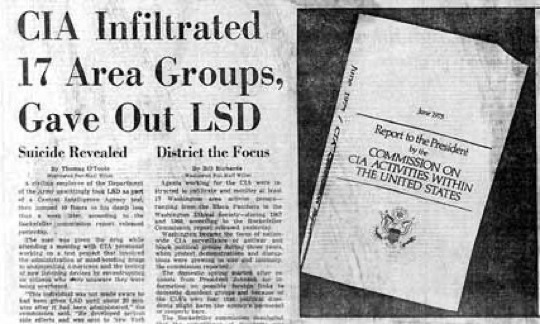
David Dickson March 15 1979 Nature Vol. 278 David Dickson reports on recent revelations about the Central Intelligence Agency's support for university research
In the late 1950s and early 1960s, the US Central Intelligence Agency mounted a comprehensive and well-planned effort to encourage university scientists to carry out research that would, the agency hoped, lead directly to techniques for controlling the human mind.
According to previously classified documents, the agency was responsible for initiating or supporting research that led subsequently to important contributions in various fields of behavioral science, including sociolinguistics, psychotherapy, and personality assessment.
And in an effort to legitimize its interest and obtain access to leading investigators, the agency financed a funding organization that provided grants to a number of prominent members of the scientific community including Carl Rogers, B. F. Skinner, and Professor Hans Eysenck even though the researchers were frequently unaware of the true source of their support.
The details of the CIA's involvement in these fields, described as helping to "liberate the behavioral sciences from the world of rats and cheese," are provided in a book which has just been published in the US by Mr. John Marks, a former Senate aide and State Department official. (The book will appear in the UK later this year.)
Using documents obtained through the Freedom of Information Act, Mr. Marks has put together a detailed picture of how the agency used the academic community in its search for the holy grail: a technique that would provide sufficient manipulation of the human mind to eliminate uncertainty from the intelligence business.
Many of the more bizarre, farcical, or outrageous aspects of this pursuit have since received wide publicity. These range from experiments that switched the East Coast academic community on to LSD, to the construction of a bugged San Francisco brothel (and included a scheme to make Fidel Castro's beard fall out).
But behind these there was, as Mr. Marks shows, a closely considered plan for deriving, through the extension of conventional research techniques and the often unknowing cooperation of university scientists, the type of information that the CIA could use for controlling the behavior of its agents and others.
Much of this research was financed through an organization known as the Society for the Investigation of Human Ecology, set up at Cornell University in 1955 under the guidance of Dr. Harry Wolff, professor of neurology and psychiatry, who was later to become president of the American Neurological Association.
Dr. Wolff's aim, which received considerable sympathy in various academic circles of the time, was to provide a framework for the multidisciplinary study of man in relation to his environment. The CIA's interest was sufficient for it to provide 90% of the society's funding until, having separated from Cornell in 1957 to obtain "more established stature in the research community," the organization was folded in the mid-1960s.
Some of the research funded through the society had a direct and obvious relation to the agency's interests. It provided Wolff himself with a research grant of $74,000 to study the factors that cause men to defect from their countries and cooperate with a foreign government. In other cases, the concerns were more basic. Professor Charles Osgood, for example, who had asked the CIA to support his research into the way people in different societies express similar feelings, received $192,975 over five years through the society. He later completed his influential work on cross-cultural meaning on a grant from the National Institute of Mental Health.
In some cases, the CIA used research grants explicitly to build up the prestige of the Human Ecology Society. Thus, the society provided $26,000 to Professor Eysenck of London University to support his work on motivation; the agency accepted that the research would have "no immediate relevance to agency needs", but the society took funding credit for nine of his publications in its 1963 report. "It's news to me," said Professor Eysenck. Often the research workers were unaware of the source of the majority of the society's funds; some were told that the money came from rich New York doctors or Texas millionaires. "I don't like secret involvement of any kind. I can't see why it could not have been open and above board," says Professor B. F. Skinner, who received $5,000 towards the research leading to his book Freedom and Dignity.
But as well as providing academic respectability, funding of research through the society allowed the CIA legitimately to approach "anyone in the academic community", as one source put it. Thus, in a move that Mr Marks describes as "turning scholars into spies", the society provided $15,000 towards a tour of the Soviet Union by ten prominent psychologists (only one of whom knew of the agency's involvement), and CIA officials debriefed the group on its return.
Support for university behavioural research was curtailed in the mid-1960s. However, in contradiction of testimony later given to Senate committees, the research itself was continued, although with a greater emphasis on more direct ways of influencing behaviour, such as inserting electrodes in the brain. (At one point, agency scientists considered the potential of genetic manipulation: "The rest of the world didn't ask until 1976 the type of questions we were facing in 1965", one agency source is quoted as saying.)
Mr. Marks admits that much of the research which the CIA sponsored led to important contributions to accepted academic knowledge- possibly because the agency was free to take imaginative leaps denied to more conservative (or more democratic) agencies. But he is uncompromising in criticising the ethical basis under which many of the experiments were carried out. (This was not always the agency's fault; some scientists had to be restrained from taking their experiments on, for example, sensory deprivation to their "terminal" conclusion.)
"We as a country can defend ourselves without sending our own scientists--mad or otherwise-into a hidden war that violates our basic ethical and constitutional principles. The time has come for the United States to lead by example by voluntarily renouncing secret government behavioural research," Mr Marks writes in his conclusion.
#mind control#brainwashing#cia#mkultra#counterinsurgency#john marks#parapolitical#parapolitics#lsd#human ecology fund#human ecology foundation
0 notes
Text
2022: Books
January 1. Silent Parade (沈黙のパレード) (2018) Keigo Higashino 2. A Nun in the Closet (1975) Dorothy Gilman 3. The Maid (2022) Nita Prose 4. Rock Paper Scissors (2021) Alice Feeney 5. It's in His Kiss (2005) Julia Quinn February 6. The Chuckling Fingers (1941) Mabel Seeley 7. Untimely Death (He Should Have Died Hereafter) (1958) Cyril Hare+ 8. No Exit (2019) Taylor Adams 9. Apprehend Me No Flowers (2020) Diane Vallere 10. Rules of Murder (2013) Julianna Deering + 11. The Lady's Mine (2022) Francine Rivers 12. Bats in the Belfry (1937) E.C.R. Lorac March 13. The Four Graces (1946) D.E. Stevenson 14. The Kill of it All (2022) Diane Vallere 15. The Spy Who Loved Me (1962) Ian Fleming 16. The Paris Apartment (2022) Lucy Foley 17. Nine Lives (2022) Peter Swanson April 18. The Nutmeg Tree (1937) Margery Sharp 19. A Time of Love and Tartan (2017) Alexander McCall Smith 20. Four Aunties and a Wedding (2022) Jesse Q. Sutanto ^ 21. Mrs. Pollifax Unveiled (2000) Dorothy Gilman ^ May 22. Finlay Donovan Is Killing It (2021) Elle Cosimano 23. All Creatures Great and Small (1970/1972) James Herriot 24. On the Way to the Wedding (2006) Julia Quinn ^ June 25. The Resting Place (Arvtagaren) (2020) Camilla Sten 26. Confessions (告白) (2008) Kanae Minato 27. Finlay Donovan Knocks 'Em Dead (2022) Elle Cosimano ^ 28. The Woman in the Library (2022) Sulari Gentill 29. Under Lock & Skeleton Key (2022) Gigi Pandian 30. Under Currents (2019) Nora Roberts 31. The House Across the Lake (2022) Riley Sager July 32. Miss Butterworth & the Mad Baron (2022) Julia Quinn, Violet Charles 33. Rose Cottage (1997) Mary Stewart * 34. Death in the Stocks (1935) Georgette Heyer + 35. The Swimming Pool (1952) Mary Roberts Rinehart + 36. Octopussy & the Living Daylights (1966) Ian Fleming ^ 37. The Science of Murder (Murder Isn't Easy: The Forensics of Agatha Christie) (2021) Carla Valentine August 38. The Peppermint Tea Chronicles (2019) Alexander McCall Smith 39. Spiders From Mars (2020) Diane Vallere ^ 40. Nightwork (2022) Nora Roberts 41. Parker Pyne Investigates (1934) Agatha Christie * 42. Murder Underground (1934) Mavis Doriel Hay 43. A Promise of Ankles (2020) Alexander McCall Smith 44. Till Death Do Us Part (1944) John Dickson Carr September 45. The It Girl (2022) Ruth Ware 46. A Flicker in the Dark (2022) Stacy Willingham 47. Solace Island (2017) Meg Tilly 48. Love in the Time of Bertie (2021) Alexander McCall Smith ^ 49. The Ink Black Heart (2022) Robert Galbraith ^ October 50. The Midwich Cuckoos (1957) John Wyndham 51. The Bullet That Missed (2022) Richard Osman ^ 52. A Song of Comfortable Chairs (2022) Alexander McCall Smith ^ November 53. Love Me or Grieve Me (2022) Diane Vallere ^ 54. The Couple at the Table (2022) Sophie Hannah 55. The Twist of a Knife (2022) Anthony Horowitz ^ 56. Kurashi at Home (2022) Marie Kondō December 57. Mystery in White (1937) J. Jefferson Farjeon 58. Murder for Christmas (1949) Francis Duncan 59. The Christmas Card Crime & Other Stories (2018) Martin Edwards (Editor) + read what I already own challenge ^ finished or caught-up in series * re-reads
0 notes
Text
Containment (2015) Review
Residents wake up one morning to find themselves locked into their flats, an epidemic has broken out and they might all be infected. They will have to work together to battle to survive.
⭐️⭐️⭐️
(more…)
View On WordPress
#2015#Amazon Prime#Amazon Video#Andrew Leung#Bharat Mistri#Christos Lawton#Containment#David Lemon#Dexter Tillis#Gabriel Senior#Hannah Chalmers#Hephzibah Roe#Horror#James Francis Andrews#Jill Buchanan#John Charles Dickson#John Hoye#Lee Ross#Louise Brealey#Luke McGibney#Michael Chapman#Neil Mcenery-West#Nick Dutton#Penny Judd#Pippa Nixon#Review#Rob Rackstraw#Sci-Fi#Sheila Reid#Thriller
1 note
·
View note
Text
EVIL is the Carousal Centerpiece of Hell! "The Devil's Fairground" reviewed! (MGI Films and ITN Distribution / Screener)
EVIL is the Carousal Centerpiece of Hell! “The Devil’s Fairground” reviewed! (MGI Films and ITN Distribution / Screener)

A pair of struggling paranormal investigator groups have been reduced to the gimmicky capturing and recording pay schemes of alleged ghost and spirit interactions, but when a hack actor is hired to setup a meet and greet with an apparent demon possessed girl, their investigation leads Freaky Link’s Jacob and Shawn and Spooky Links’ Lace and Rob to an abandoned and dilapidated fairground as the…
View On WordPress
#2019#Amusement Park#Anna#Anna 2#Anna 2: Freaky Links#Annabelle#Blood Vow#Dallas#Daniel Frank#dvd#Fort Worth#gateway to hell#Gerald Crum#gore#Hell#horror-comedy#ITN Distribution#John Charles Dickson#Justin Duncan#Kenzie Pallone#Lake Fear#Meathook Massacre 3: First Hunt#Mercedes Peterson#MGI Films#Michael Crum#sequel#Shannon Snedden#silent hill#Texas#the conjuring
0 notes
Audio
Today’s Tale Well Calculated to Keep You in SUSPENSE...
We’re going back to the beginning on the anniversary of Suspense’s premiere episode. From June 17, 1942, it’s the show that started it all - “The Burning Court” by John Dickson Carr. It’s a story of murder, an infamous poisoner, and an eccentric criminologist (Charles Ruggles) who solves the crime.
1 note
·
View note
Text

This photograph of personnel from ‘Naval 5’ includes, front row, from left to right, R G St John, unknown, Wallace Newton-Clare (third from left), Thomas F Le Mesurier (seven victories), Stanley J Goble (ten victories), I N C Clarke, Robert Jope-Slade and C P O Bartlett (eight victories). Charles R Lupton (standing, sixth from left) scored five victories and Euan Dickson (second from right) was credited with 14 (Norman Franks)
Photo and caption featured in Naval Aces of World War 1 Part I (Aircraft of the Aces) by Jon Guttman
#R G St John#unknown#Wallace Newton-Clare#Thomas F Le Mesurier#Stanley J Goble#I N C Clarke#Robert Jope-Slade#C P O Bartlett#Charles R Lupton#Euan Dickson#‘Naval 5’#Norman Franks
3 notes
·
View notes
Text



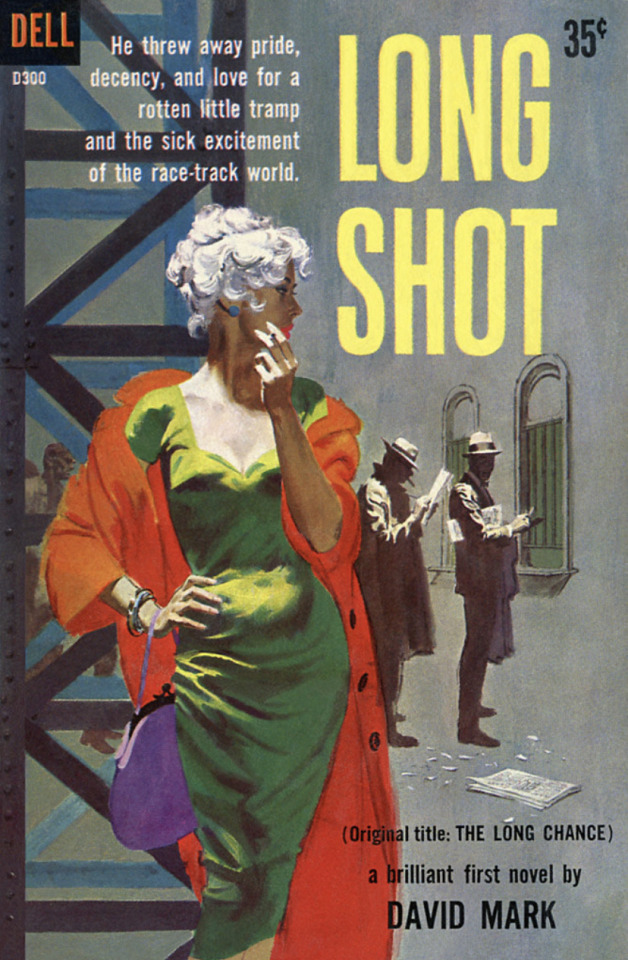

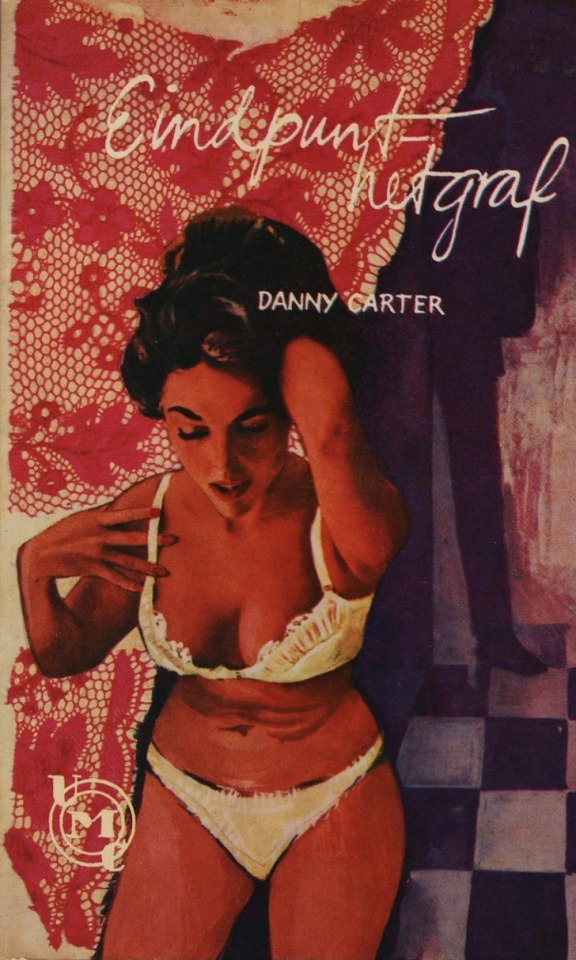
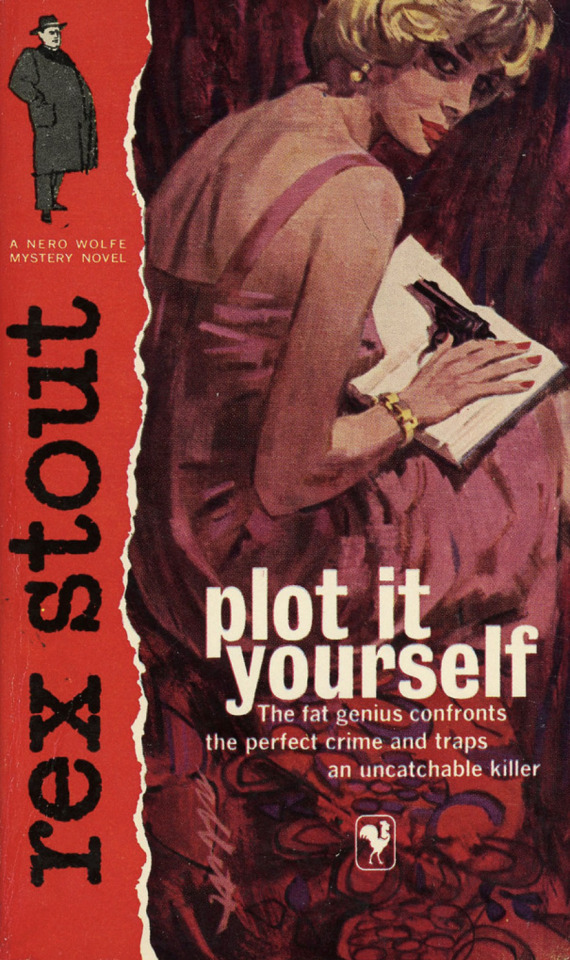

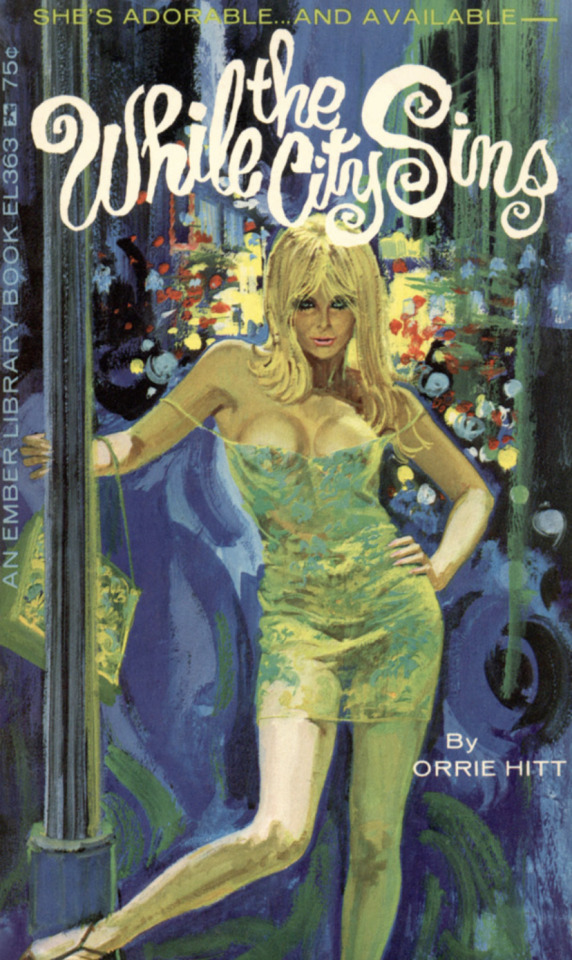

A Bullet for a Blonde by Paul Kruger. (1958) Artwork by Art Sussman.
Rage of Desire by Charles Mergendahl. (1958) Artwork by Victor Kalin.
Slay Ride by Frank Kane. (1959) Artwork by Victor Kalin.
Long Shot by David Mark. (1959) Artwork by Mitchell Hooks.
Mischief by Charlotte Armstrong. (1963)
Eindpunt het graf by Danny Carter. (1966) Artwork by Milo.
Plot it Yourself by Rex Stout. (1960) Artwork by Bob Abbett.
Champagne for One by Rex Stout. (1960) Artwork by Bob Abbett.
While the City Sins by Orrie Hitt. (1967) Artwork by Robert Bonfils.
He Who Whispers by John Dickson Carr. (1957) Artwork by Sanford Kossin.
#art sussman#victor kalin#mitchell hooks#bob abbett#robert abbett#robert bonfils#sanford kossin#art#illustration#mine#fave art
325 notes
·
View notes
Text
Literatura de crimen y misterio.
Extraña confesión, de Antón Chéjov
El inquilino, de Marie Belloc Lowndes
Extraños en un tren, de Patricia Highsmith
La ventana indiscreta y otros relatos, de Cornell Woolrich
La bestia debe morir, de Nicholas Blake
El nuevo libro de Sonia, de Michael Innes
Lo mejores cuentos policiales, de Jorge Luis Borges y Adolfo Bioy Casares (eds.)
El sabueso de los Baskerville, de Arthur Conan Doyle
El cuarto gris, de Eden Phillpotts
El dragón del estanque, de S. S. van Dine
El visitante de medianoche, de S. S. van Dine
El problema final, de Arturo Pérez-Reverte
El misterio del pabellón rojo, de Robert van Gulik
El monasterio encantado, de Robert van Gulik
El fantasma del templo, de Robert van Gulik
Tres cuentos chinos, de Robert van Gulik
Los misterios del lago asesino, de Robert van Gulik
Los asesinos de la campana china, de Robert van Gulik
Los traficantes de naufragios, de Robert Louis Stevenson
El talento de Mr. Ripley, de Patricia Highsmith
Una casa en alquiler, de Charles Dickens
El juego del escondite, de Wilkie Collins
Benito Cereno, de Herman Melville
Cómo escribir relatos policíacos, de G. K. Chesterton
El caso del perro de los Baskerville, de Pierre Bayard
Como un espectro; Miao Dao, de Joyce Carol Oates
Los rojos Redmayne, de Eden Phillpotts
Antología de las mejores novelas policíacas (vol. I), de AA. VV
Noche de brujas, de John Dickson Carr
1 note
·
View note
Text
Events 1.7
49 BC – The Senate of Rome says that Caesar will be declared a public enemy unless he disbands his army. This prompts the tribunes who support him to flee to Ravenna, where Caesar is waiting. 1325 – Alfonso IV becomes King of Portugal. 1558 – French troops, led by Francis, Duke of Guise, take Calais, the last continental possession of England. 1608 – Fire destroys Jamestown, Virginia. 1610 – Galileo Galilei makes his first observation of the four Galilean moons: Ganymede, Callisto, Io and Europa, although he is not able to distinguish the last two until the following day. 1738 – A peace treaty is signed between Peshwa Bajirao and Jai Singh II following Maratha victory in the Battle of Bhopal. 1782 – The first American commercial bank, the Bank of North America, opens. 1785 – Frenchman Jean-Pierre Blanchard and American John Jeffries travel from Dover, England, to Calais, France, in a gas balloon. 1835 – HMS Beagle, with Charles Darwin on board, drops anchor off the Chonos Archipelago. 1894 – Thomas Edison makes a kinetoscopic film of someone sneezing. On the same day, his employee, William Kennedy Dickson, receives a patent for motion picture film. 1904 – The distress signal "CQD" is established only to be replaced two years later by "SOS". 1919 – Montenegrin guerrilla fighters rebel against the planned annexation of Montenegro by Serbia, but fail. 1920 – The New York State Assembly refuses to seat five duly elected Socialist assemblymen. 1922 – Dáil Éireann ratifies the Anglo-Irish Treaty by a 64–57 vote. 1927 – The first transatlantic commercial telephone service is established from New York City to London. 1928 – A disastrous flood of the River Thames kills 14 people and causes extensive damage to much of riverside London. 1931 – Guy Menzies flies the first solo non-stop trans-Tasman flight (from Australia to New Zealand) in 11 hours and 45 minutes, crash-landing on New Zealand's west coast. 1935 – Benito Mussolini and French Foreign minister Pierre Laval sign the Franco-Italian Agreement. 1940 – Winter War: Battle of Raate Road: The Finnish 9th Division finally defeat the numerically superior Soviet forces on the Raate-Suomussalmi road. 1948 – Kentucky Air National Guard pilot Thomas Mantell crashes while in pursuit of a supposed UFO. 1954 – Georgetown-IBM experiment: The first public demonstration of a machine translation system is held in New York at the head office of IBM. 1955 – Contralto Marian Anderson becomes the first person of color to perform at the Metropolitan Opera in Giuseppe Verdi's Un ballo in maschera. 1959 – The United States recognizes the new Cuban government of Fidel Castro. 1968 – Surveyor Program: Surveyor 7, the last spacecraft in the Surveyor series, lifts off from launch complex 36A, Cape Canaveral. 1972 – Iberia Flight 602 crashes near Ibiza Airport, killing all 104 people on board. 1973 – In his second shooting spree of the week, Mark Essex fatally shoots seven people and wounds five others at Howard Johnson's Hotel in New Orleans, Louisiana, before being shot to death by police officers. 1979 – Third Indochina War: Cambodian–Vietnamese War: Phnom Penh falls to the advancing Vietnamese troops, driving out Pol Pot and the Khmer Rouge. 1980 – U.S. President Jimmy Carter authorizes legislation giving $1.5 billion in loans to bail out the Chrysler Corporation. 1984 – Brunei becomes the sixth member of the Association of Southeast Asian Nations (ASEAN). 1985 – Japan Aerospace Exploration Agency launches Sakigake, Japan's first interplanetary spacecraft and the first deep space probe to be launched by any country other than the United States or the Soviet Union. 1991 – Roger Lafontant, former leader of the Tonton Macoute in Haiti under François Duvalier, attempts a coup d'état, which ends in his arrest. 1993 – The Fourth Republic of Ghana is inaugurated with Jerry Rawlings as president. 1993 – Bosnian War: The Bosnian Army executes a surprise attack at the village of Kravica in Srebrenica. 1994 – A British Aerospace Jetstream 41 operating as United Express Flight 6291 crashes in Gahanna, Ohio, killing five of the eight people on board. 1999 – The Senate trial in the impeachment of U.S. President Bill Clinton begins. 2012 – A hot air balloon crashes near Carterton, New Zealand, killing all 11 people on board. 2015 – Two gunmen commit mass murder at the offices of Charlie Hebdo in Paris, shooting twelve people execution style, and wounding eleven others. 2015 – A car bomb explodes outside a police college in the Yemeni capital Sana'a with at least 38 people reported dead and more than 63 injured. 2020 – The 6.4Mw 2019–20 Puerto Rico earthquakes kill four and injure nine in southern Puerto Rico.
0 notes
Photo
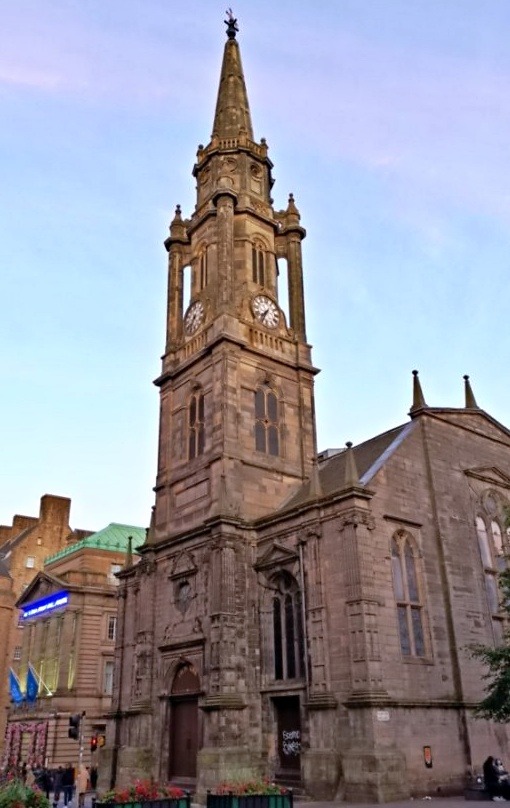
Christ’s Church at the Tron.
Or to ordinary folk of Edinburgh, just the Tron Kirk. The Kirk was initially commissioned by Charles I in 1633, one of two churches he commissioned when he designated St Giles as a cathedral.
The foundation stone was laid in 1637 and the building first used for worship in 1641 (as indicted by the tympanum carving above the doorway) although it was not finally completed until 1647. The church was dedicated to Christ, but became known as ‘Christ’s Kirk at the Tron’, and afterwards simply ‘The Tron’, due to the presence of the ‘salt-tron’ – a public weighing beam – just outside the church.
The Tron was designed by John Mylne, the Royal Master Mason, with a mix of Palladian and Gothic elements. On the exterior the large stained glass windows with tracery are topped with pediments and the entrance front and corners are decorated with ionic pilasters. The interior has mostly been stripped out but the original hammerbeam-style roof, with a sexfoil pattern, survives. This is extremely rare and was designed by the Royal Master Wright John Scott, who was also responsible for the one at Parliament Hall.The City of Edinburgh Council has given the green light to SHBT to take forward a project to restore the much-loved Tron Kirk on Edinburgh’s Royal Mile.
The building was originally T-shaped, but was truncated in 1785 to form the present rectangular building. This redesign was carried out by John Baxter in order to make way for the construction of South Bridge and Hunter Square. The original spire, added by Thomas Sandilands in 1671, was wooden. This burnt down in 1824 and was replaced by the present octagonal stone spire one designed by brother architects Richard and Robert Dickson. Later in the nineteenth century Robert Rowand Anderson carried out renovations to the interior of the Tron Kirk, this involved the creation of a new gallery and a new pulpit in 1888, which were later removed during renovations in the mid-twentieth century. Anderson’s renovations likely coincided with the installation of the Victorian stain-glass windows which are still present.
In 1952 the congregation moved out of the Tron Kirk and the Church of Scotland sold the building to the City of Edinburgh Council. The building lay unused for several decades before being partially restored between 1974-76. This involved the restoration of the steeple by Andrew Renton and archaeological investigations which led to the discovery of the surface of Marlin’s Wynd and the foundations of other earlier buildings underneath the main floor. Marlin’s Wynd is now believed to be the oldest surviving paved street in Scotland.
In 2003, the Tron was placed on the Buildings at Risk Register. It has since cycled through various uses, including as a tourist information centre, a festival venue and a book shop. From 2018 to December 2020, the building was leased by Edinburgh World Heritage Trust.
In May 2021, City of Edinburgh Council agreed to let Scottish Historic Buildings’ Trust (SHBT) take out a long-term lease of the Tron in order to develop a new project to restore this significant and much-loved building. The SHBT will now develop a feasibility study to set out a future vision for the Tron. In the interim, they will fulfil a management role for the building, liaising with all existing and new tenants to make sure that the building is open for business as soon as possible.
While the feasibility study for the restoration is developed, Scottish Design Exchange will run a boutique artists’ market in the Tron Kirk, which will be open to the public from July 1st this year
18 notes
·
View notes